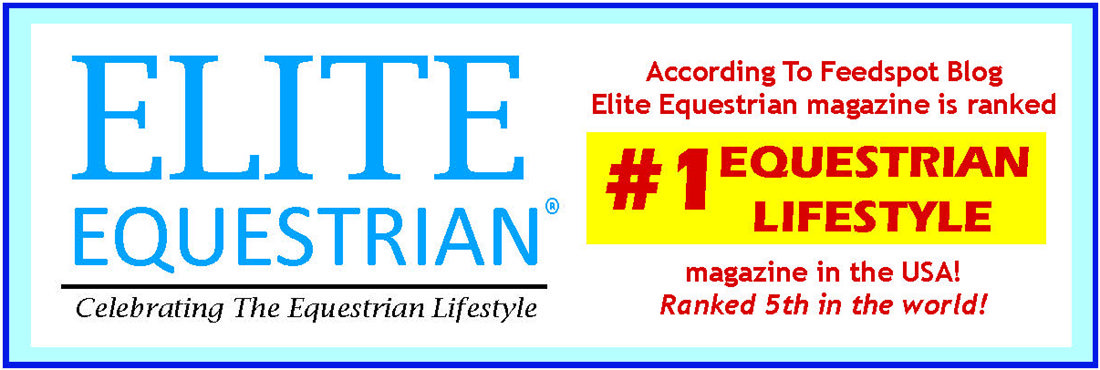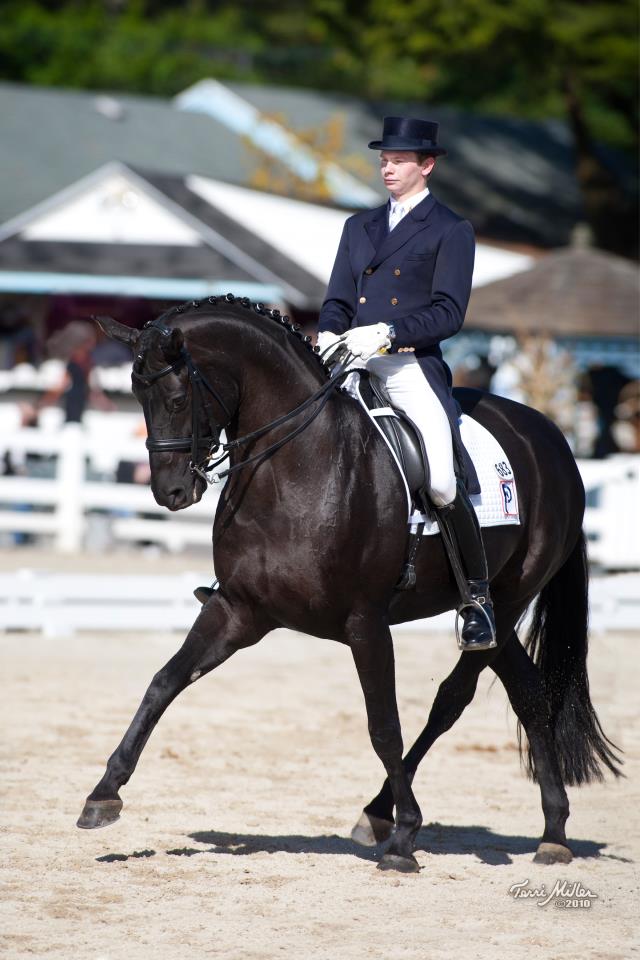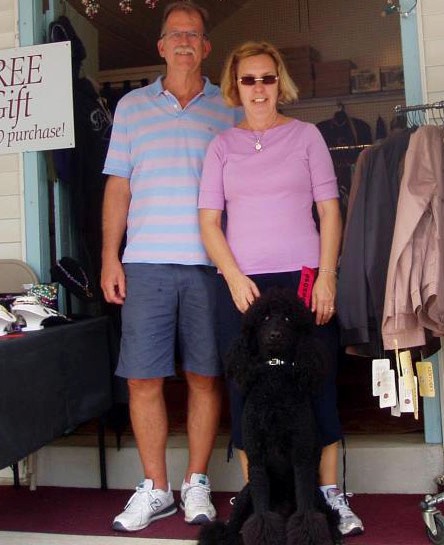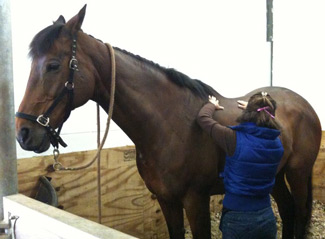
How Acupressure can help Osteoarthritis
No horse is immune to arthritis. Both young and old horses can experience osteoarthritis, though we see it in older horses more often.
The horse’s weight-bearing joints, the hock, fetlock, pastern, and coffin joints are most susceptible to arthritic changes. It is less common for a horse to develop arthritis in the stifle joints and spinal column, but it does happen. And, osteoarthritis can affect other joints where there’s been an injury or repetitive, abnormal stress applied over a period of time.
Osteoarthritis is the most common equine degenerative joint disease. It can be the result of impact trauma, injury, over-use, infection, poor conformation, hereditary issues, mineral or dietary deficiencies, and aging. Horses involved in competitive activities are more apt to develop arthritis at an earlier age due to the increased stress on their joints.
Being aware of common causes combined with early detection of arthritis affords us the opportunity to slow the progression of the disease. Early signs of arthritis can be:
• Mild swelling and heat in the joint
• Reluctance or refusal to perform in his usual sport
• Stiffness following inactivity
• Decrease in joint flexibility (range of motion)
• Crunching (“crepitus”) sound when the joint is flexed
• Tenderness of joint upon palpation
• Tiring more quickly than usual, and,
• Sudden attitude or mood change.
More severe indications of arthritis include the same list of indicators given above but more exaggerated, plus – your horse will most likely exhibit some degree of lameness because his joints are painful. Arthritis hurts.
Older horses are most likely to develop arthritis. During the first two years of a horse’s life, his body produces cartilage in his joints faster than it is worn away. Cartilage is the smooth material covering the bones and protecting the bones inside joint capsule. After the age of two, cartilage is created at about the same rate it is worn down. By the age of fifteen, the horse’s body produces cartilage at a slower rate than it is being worn away. Additionally, the synovial fluid, which lubricates the joints and helps the joint glide, tends to become thin and less plentiful with age.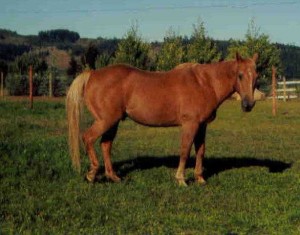
When cartilage is worn away and there’s less synovial fluid in the joint, the opposing bones receive greater impact. As a horse ages, (or a young horse due to other factors such as injury), his tendons and ligaments are not as strong and flexible as they need to be for joint stability. These conditions can lead to joint instability, inflammation, pronounced swelling and obvious lameness. The body’s natural reaction to this painful condition is to grow more bone in an attempt to protect itself. The over-growth of bone indicates severe osteoarthritis. This condition is very painful and mobility is definitely compromised.
We want our horses to enjoy active lives for as long as possible. Since we have yet to find a way to make our horses or ourselves grow younger each day, we have to do our best to be alert to the initial signs of osteoarthritis. Avoiding injuries and not over-working your horse helps ease the stress on your horse’s joints. Adding a simple acupressure session to your after-exercise grooming routine helps bring healthy nourishment to your horse’s joints and surrounding tissues.
Acupressure Session
By offering your horse an acupressure session after training or trail riding you are supporting the enhancement of nutrients to his joints while removing toxin build up in the tissues. This will aid in easing any resulting pain from the workout, support the replenishment of synovial fluid, and bring blood supply to tissues of the joints. Hence, the reduced risk of developing osteoarthritis or having it progress rapidly.
There are specific acupressure points, commonly called “acupoints,” that facilitate the supply of vital substances to the cartilage, bone, and tissues. The health of joints is dependent on the flow of chi, life-promoting energy, and blood which nourishes them. After thousands of years of clinical observation, Traditional Chinese Medicine practitioners have shown by stimulating particular acupoints we can enhance the harmonious flow of chi and blood through and around the animal’s joints.
The acupoints selected for a general joint health acupressure session in the following Equine Joint Health chart are not specific to a particular joint. If you suspect your horse of having or in the process of developing osteoarthritis, please consult with your holistic veterinarian and acupressure practitioner for more specific acupoints for the area of concern. Consulting an equine nutritionist would be wise as well.
Having your horse move well and feel good for lots of years keeps us all happy. Horses are stoic by nature, so it is up to you to watch for the early, tell-tale signs arthritis.
Your holistic veterinarian, acupressure practitioner, and canine nutritionist are good resources for your dog to be as comfortable as possible for as long as possible. Because there are many different types of canine arthritis, consulting professionals who can help zero-in on the exact joint problem is the best strategy for your dog’s comfort.
Arthritic conditions can be helped with a range of natural products in addition to the holistic approach. Read Holly’s story for more information.
Tallgrass Animal Acupressure Institute visits UK in 2013!
Article written and provided by Amy Snow and Nancy Zidonis who are the authors of: Equine Acupressure: A Working Manual, Acu-Dog: A Guide to Canine Acupressure, and Acu-Cat: A Guide to Feline Acupressure.
They founded Tallgrass Animal Acupressure Institute which offers training programmes, plus books, meridian charts, and videos. Tallgrass provides hands-on and online training courses worldwide including a 330-hour Practitioner Certification Programme. Tallgrass is an approved school for the Dept. of Higher Education through the State of Colorado and an approved provider of NCBTMB CE’s. To contact them and find out more about their England 2013 tour –www.animalacupressure.com email: animalacupressureuk@hotmail.co.uk
Tallgrass has over 20 years experience within the human and animal acupressure community. Tallgrass instructors are known to be the leaders in their field. They are proud to hold the following accreditations: NBCAAM, NCBTMB, USDF, DPOS, alongside accreditation from significant educational organisations and institutions.
